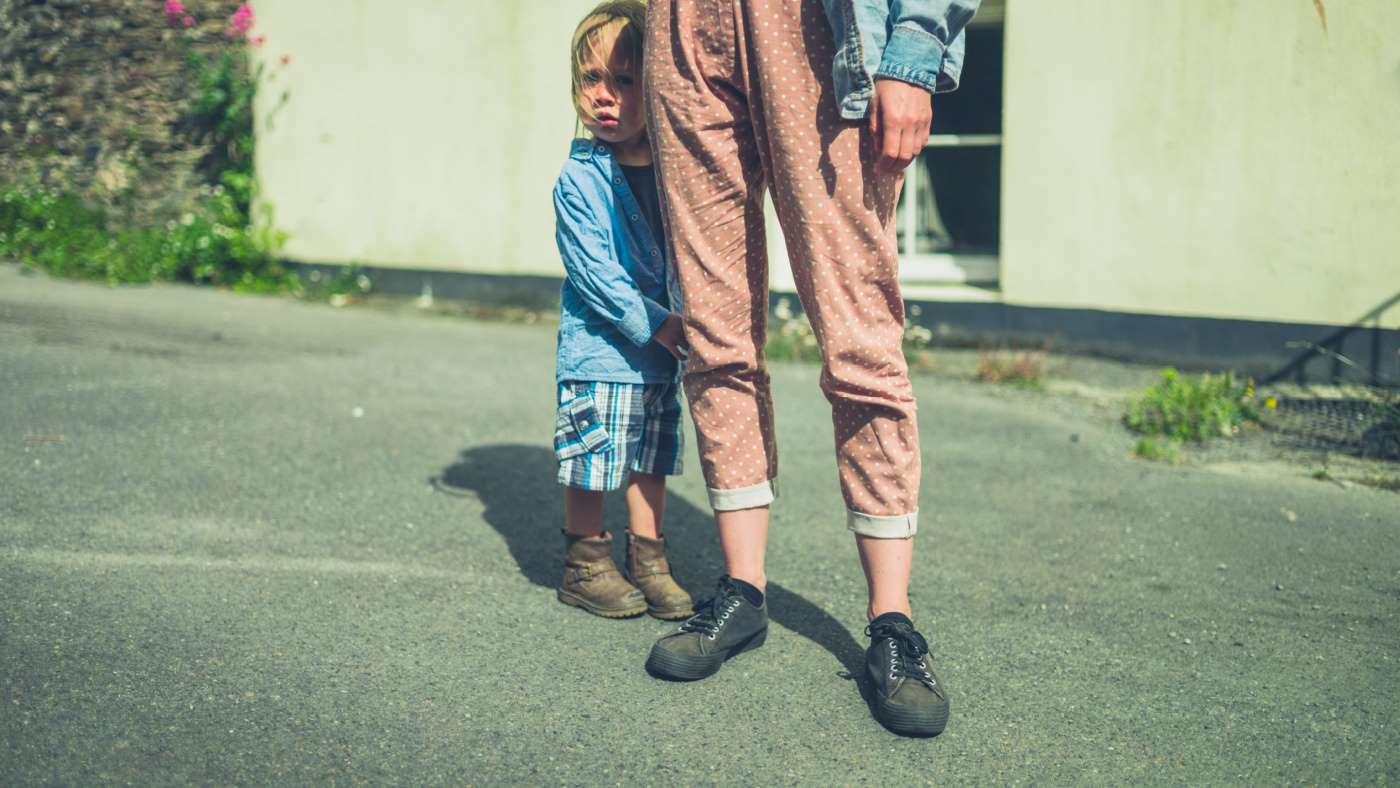“I’m scared”

Dark nights, fireworks and fancy dress can trigger fear in some children. It can be hard to know how to support your child if they feel afraid, so we’ve investigated the research and put together a few tips.
Fear can be a useful emotion, as feeling afraid helps us to stay safe. But we also need to learn how to regulate fear, as we do all other emotions, so we have the right level for each situation.
It is important to be aware that sometimes the right amount of fear would result in responding by leaving a situation. Emotional regulation might sometimes involve maintaining a scared feeling, so it helps you get away from a dangerous situation.
The tips at the end of this article are about supporting your child in a situation you know is safe, but they feel afraid. This could be when you’re somewhere new, if your child fears something like people in fancy dress or if the line between imagination and reality becomes blurred and they’re scared of something that isn’t real.
Your child will master many of the skills they need to regulate their emotions (including fear) during their first five years – especially in toddlerhood.[1]
This development happens in a few stages, newborns show distress without differentiating between emotions. As they grow older, children begin to show fear responses and individual differences in these become more apparent.[2]
As with all emotions, babies depend on adults around them to help them regulate when they are afraid. As they develop, they will be more able to regulate themselves which means the balance will shift.
We know every child is different and how you respond to your child’s fear will be based on what you know about their temperament and the situation.
If they’re just a little unsure, and you know they’re safe and have some ways to regulate their fear, you might wait before stepping in to offer support. And this might help them to develop the skills they need to regulate themselves. If you know they haven’t got these skills yet or that the situation is not safe, you’ll step in sooner.
It might be helpful to think about these strategies for regulating emotions, which your child will start to use as they mature and develop the skills they need.
Things that help your child regulate their emotions when they’re afraid
Looking away - attention-shifting[3]
You might notice your child avoids looking at something they find frightening. This is not the same as you distracting them as when they’re making the choice to look away themselves, they also recognise how they feel and respond to it.
When distracted by an adult they might not have the same recognition of their feelings, so try to avoid forcing a distraction when your child is feeling afraid.
Looking to someone they trust for support – caregiver focused behaviour[3]
Other people are an important part of emotional regulation for all of us – and if your child is scared, seeking support from someone they trust is a good strategy to use.
Doing something they find comforting – self-soothing[3]
You will know the things your child does to sooth themselves, which can help when they’re afraid. It could be stroking their cheek, twiddling their hair or something else.
Tips for you, when your child is afraid
Offer comfort
Your child will develop the skills they need to regulate their emotions as they grow, but babies and very young children will mostly rely on adults for this support.
All of us need someone to help us sometimes, so if your child needs a cuddle, a smile or some words of reassurance offer them that support.
Don’t dismiss their fears
It might be difficult to understand your child’s fears sometimes, especially if they are linked to something you expected them to enjoy.
Your baby or toddler might be terrified of something you planned as a lovely experience for them like meeting a character from a favourite story or visiting Father Christmas.
Keep calm and reassure them, don’t push them towards something that scares them. But also, don’t completely avoid scary things – perhaps let them watch from a distance with you.
Experiencing things they find frightening with your support will gradually build their confidence and their ability to regulate fear themselves.
Give them warning when you can
If you know your child is scared of something, and you know this is about to happen, tell them. This could be something like saying, “I need to dry my hands now, so they’ll be a big noise soon.”
Don’t compare
Children have different fears and responses when they’re afraid, try not to compare your child to others but think about what you know helps them when they are frightened.
More about self-regulation
If you want to know more about how self-regulation develops from birth to five, and get some ideas to help, read this article which we shared recently.
As with all aspects of your child’s development, if you’re concerned about your child’s response when they’re afraid, speak to a health or childcare professional.
References:
[1] Buss, K.A. (2011). Which fearful toddlers should we worry about? Context, fear regulation, and anxiety risk. Developmental psychology, 47(3), 804-819. https://psycnet.apa.org/doi/10.1037/a0023227
[2] Wu, Q. & Cui, M. (2023). How much maternal sensitivity is adaptive: Fear temperament, high-intensity fear, and preschooler’s behavioral problems. Journal of Affective Disorders, 328, 200-209. https://doi.org/10.1016/j.jad.2023.02.040
[3] Kiel, E.J., Price, N.N., Premo, J.E. (2019). Maternal comforting behavior, toddlers’ dysregulated fear, and toddlers’ emotion regulatory behaviors. Emotion